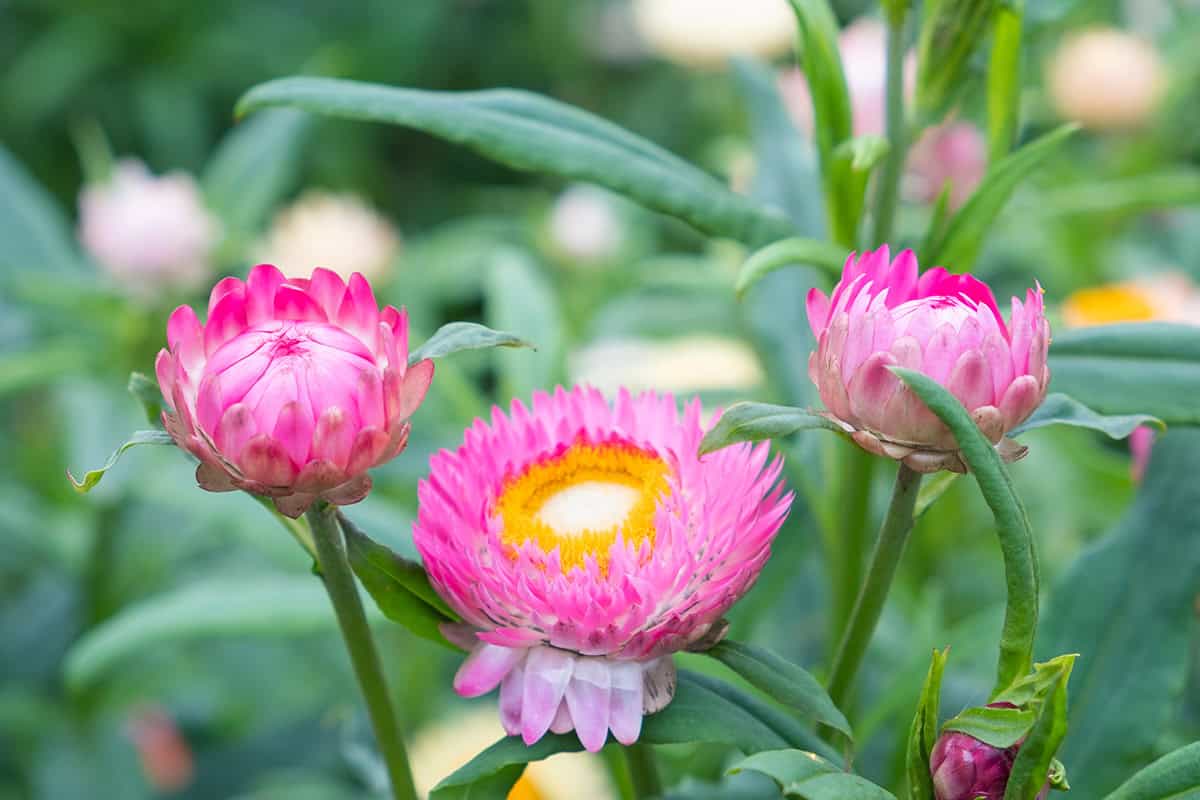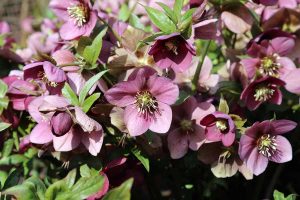Strawflowers are a gardener’s favorite for good reason—they’re hardy, eye-catching, and perfect for cutting gardens. Read on to learn how to grow and care for them in your own space.
Table of Contents
Light
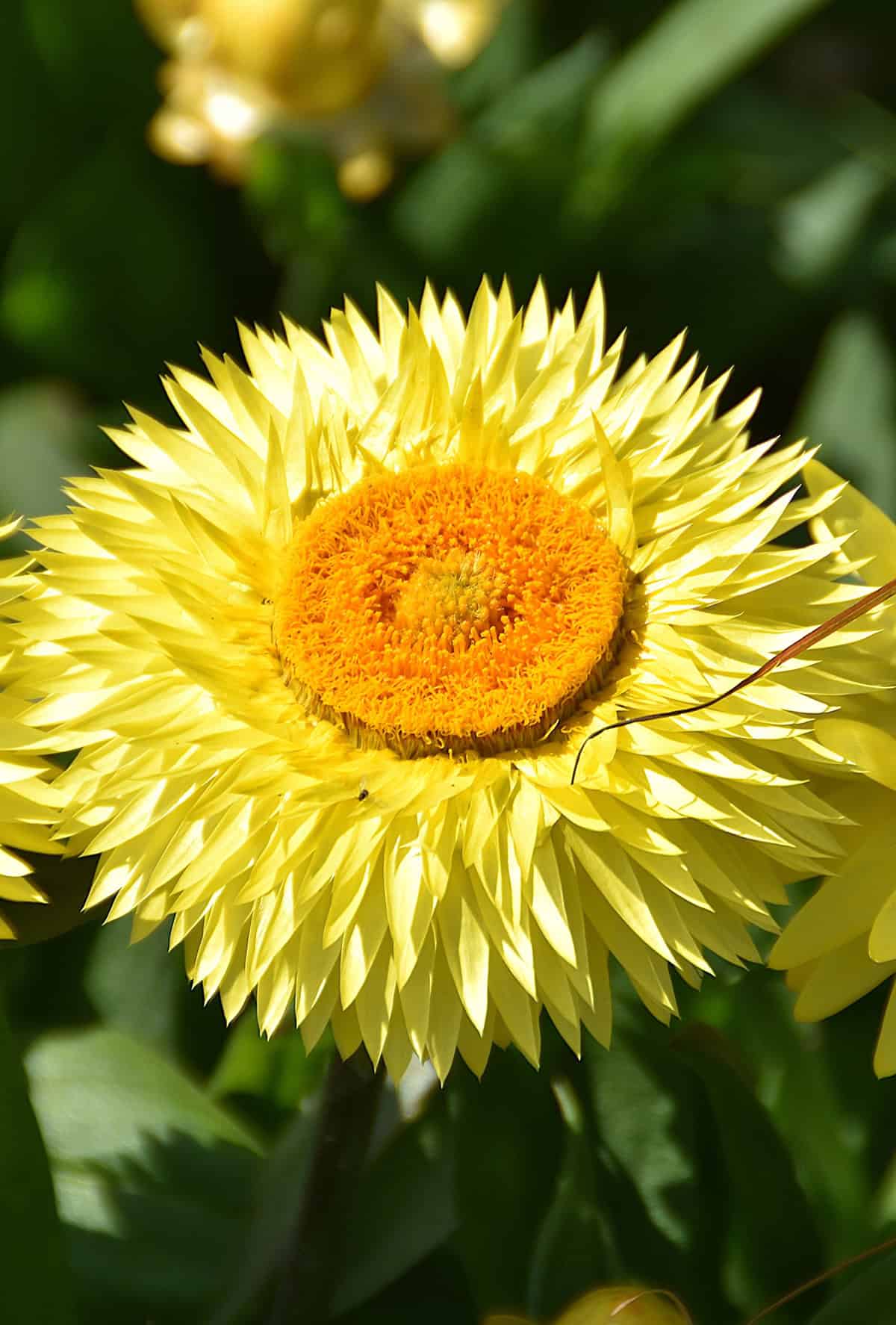
These flowers really come alive with plenty of sunlight. Try to give them a spot where they soak up full sun for most of the day—at least six hours is the sweet spot for best blooms.
If they’re not getting enough sun, you’ll probably see them stretching or leaning for the light, and the stems might get a bit flimsy. Not enough light means fewer flowers, too. Sunlight even helps keep the leaves drier, which cuts down on disease.
Look for a spot that stays bright and isn’t crowded by trees or big shrubs. Strawflowers rely on that sunlight to keep their color bold and their stems strong.
Got a sunny windowsill or balcony? Perfect for containers. Indoors, a grow light can help if the natural light just isn’t enough. Remember to check that nothing’s blocking the light, since that can change as the seasons shift.
Soil
Strawflowers want soil that drains well. Heavy clay? That’s not their thing—it holds too much water and can mess with the roots. Sandy or loamy soil is much better for healthy growth.
Mix in some organic matter, like compost or leaf mold, to help hold moisture without turning things soggy. Neutral to slightly acidic soil, pH 6.0 to 7.5, works nicely.
Before you plant, clear out any weeds or rocks and loosen up the soil so roots can spread. If you’re planting in a spot that tends to hold water, consider a raised bed or a gentle slope to keep things from getting waterlogged.
Wet roots are a recipe for rot, so after rain, the soil should dry out fairly quickly. Adding compost each year keeps things nutrient-rich and supports steady flowering.
Water
Water matters, but it’s a balancing act. Keep the soil evenly moist, but not soggy—too much water leads to root rot, and too little dries up the blooms.
Stick your finger in the soil; if the top inch is dry, it’s time to water deeply. Shallow watering just encourages weak roots, so go for a good soak at the base.
Let the soil dry a bit between waterings. Don’t let it stay wet for long stretches.
Early in the season, seedlings need more frequent water until roots get established. Later on, you can ease up a bit.
Water at the base, not over the leaves, to avoid leaf diseases. Mornings are best so anything that does get wet dries off during the day.
Hotter weather can mean more frequent watering—drooping leaves are usually a hint the plant’s thirsty.
Mulch helps a lot with holding moisture and keeping weeds down. Straw or fine bark does the trick.
Temperature And Humidity
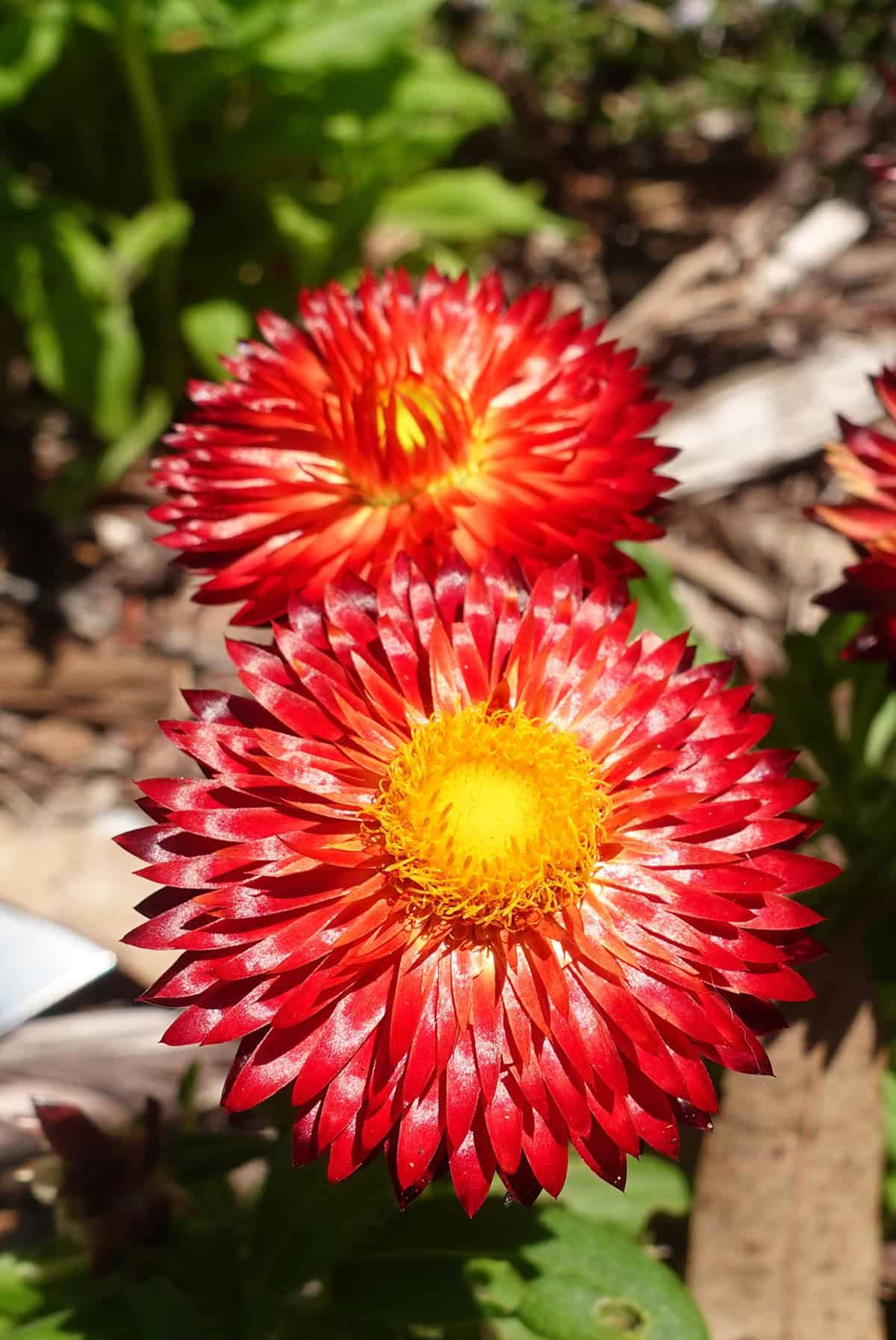
Warm weather suits strawflowers best. Daytime temps between 65°F and 75°F are ideal, with cooler nights to steady their growth.
Hold off planting until the threat of frost is gone—young plants can’t handle a cold snap. Wait for spring soil to warm up before moving them out.
They don’t need much humidity. Dry air doesn’t bother them, and you won’t have to fuss with misting. Just make sure there’s good air flow, especially indoors or if they’re packed in tight. Crowding traps moisture and that’s where problems start.
When summer heat gets extreme, flowers might fade faster. A bit of afternoon shade helps take the edge off and keeps the blooms looking better, longer.
Fertilizer
Strawflowers aren’t needy when it comes to fertilizer. Too much can make them lanky and cut down on blooms. A balanced, all-purpose fertilizer is all you need for steady growth.
Feed early in the season—granular or diluted liquid both work. Water it in well so the roots get the benefit.
If your soil’s already pretty fertile, go easy on the extra feeding. Check soil fertility before adding more, since overdoing it can cause issues.
Quick-release fertilizers give a fast boost, but slow-release is usually safer, especially if you’re just starting out. Either way, follow the package directions. Avoid high-nitrogen formulas—they’ll just give you more leaves and not enough flowers.
Once every four to six weeks is plenty for most gardens. Stick to the label instructions. Well-fed strawflowers tend to have stronger stems and richer blooms.
Propagation
Starting strawflowers from seed is straightforward. Many folks sow them indoors six to eight weeks ahead of the last frost. Sprinkle seeds on moist seed mix, press them in lightly, and give them light—they need it to sprout.
For cuttings, pick healthy, disease-free stems. Snip a 2-3 inch piece just below a leaf node, then tuck it into moist, well-drained soil. Keep humidity up until you spot new growth.
Daytime temps around 70°F help roots develop. Don’t overwater; soggy conditions just invite rot. Roots usually show up in a couple of weeks.
Sometimes, strawflowers will self-seed if you leave some blooms to dry out at the end of the season. You might spot new seedlings next year.
Handle young plants carefully—their stems can be pretty delicate. Move them outside after frost is past, and give them at least 10 inches of space for good airflow.
Pruning
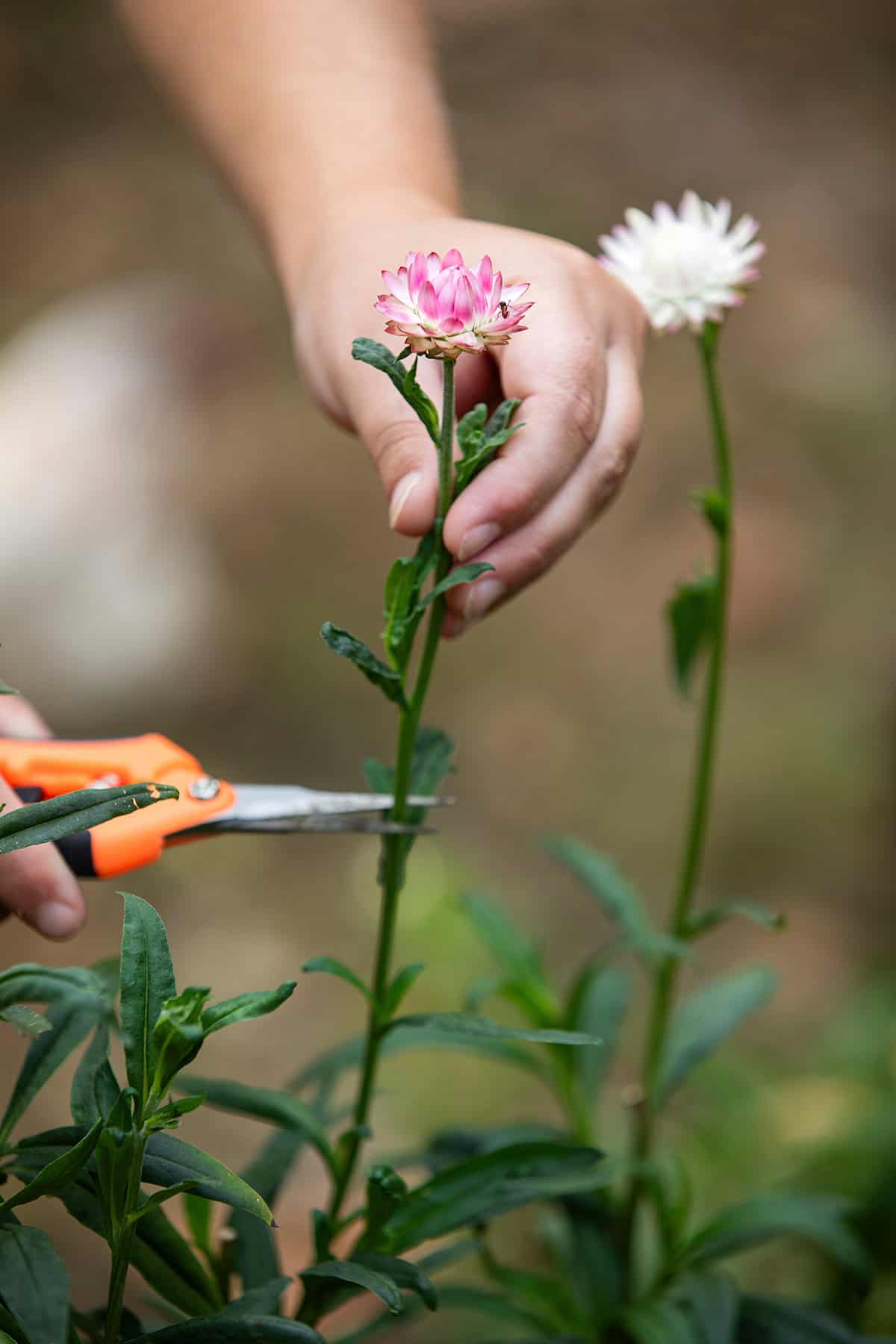
Pruning keeps strawflowers looking their best and encourages more blooms. Snip off dead or faded flowers to spark new ones—it keeps things tidy and colorful.
Trim back any wilted or damaged stems as they appear. Sharp, clean scissors or pruners make a cleaner cut and reduce disease risk.
Pinching the tips of young plants early in the season encourages bushier growth and more side branches, leading to a fuller look and extra flowers.
No need for heavy pruning. Just focus on removing what’s spent or damaged. A bit of routine care goes a long way.
Potting And Repotting
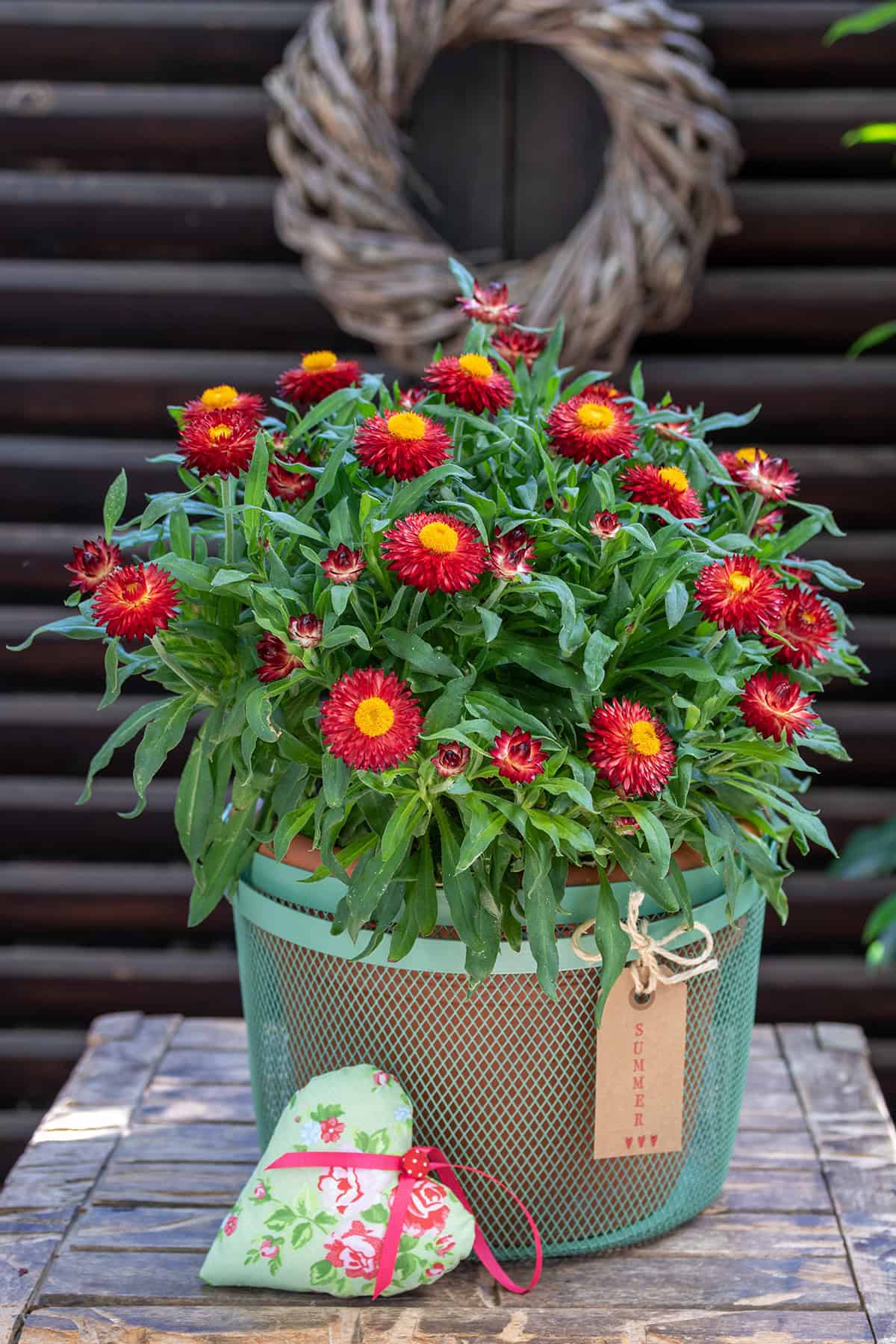
For containers, drainage is everything. Use a decent potting mix—something that holds moisture but still lets air reach the roots. Skip the heavy stuff.
Make sure the pot has drainage holes. A small shard over the hole keeps soil in place. Center the plant, fill in gently, and leave about an inch at the top for watering space.
Repot when roots crowd the pot or start poking out the bottom. Go up just an inch or two in pot size. Loosen up any circling roots before settling it into fresh mix.
Water after repotting to help the soil settle. Keep the plant out of harsh sun for a day or so while it recovers. If it looks steady, move it back to its usual spot.
Common Problems & Troubleshooting
Strawflowers aren’t immune to problems. Leaf spots and powdery mildew can pop up in humid spells—usually showing as weird patches or discoloration.
Pests like aphids and thrips sometimes go after new shoots and flowers. Often, a gentle insecticidal soap or just picking off affected bits by hand is enough to keep things under control.
Poor drainage or too much water leads straight to root rot. Let the soil dry out between waterings, and make sure pots or beds drain well. If stems get mushy or wilt even when the soil is damp, that’s a red flag for overwatering.
If color fades or plants get leggy, they probably need more sun—six hours of bright light is the minimum. Sparse blooms usually mean they’re craving more direct sunlight.
Pinch off faded flowers for more blooms and a neater look. Remove dying leaves to stop disease and keep things healthy. Check regularly for pests or stress so you can catch issues early.
Plant Varieties
There’s a surprising range of strawflower varieties out there. Most shoot up to about 2 or 3 feet, but you’ll also find compact types that barely hit a foot tall. Some are all about those punchy orange blooms, while others lean toward softer pinks, reds, or yellows.
For containers, the dwarf ones really shine. They’re easygoing in pots or window boxes and honestly do a lot for a cramped balcony or patio. Taller sorts are better for the back row in a border, or tucked behind shorter plants in a mixed bed.
Some of the newer hybrids are worth a look if you care about disease resistance or you’re after something a little different in terms of flower shape. There are types with bigger blooms, or petals that just look a bit wild. It’s kind of fun to mix and match—go bold, or keep things subtle, depending on your mood.
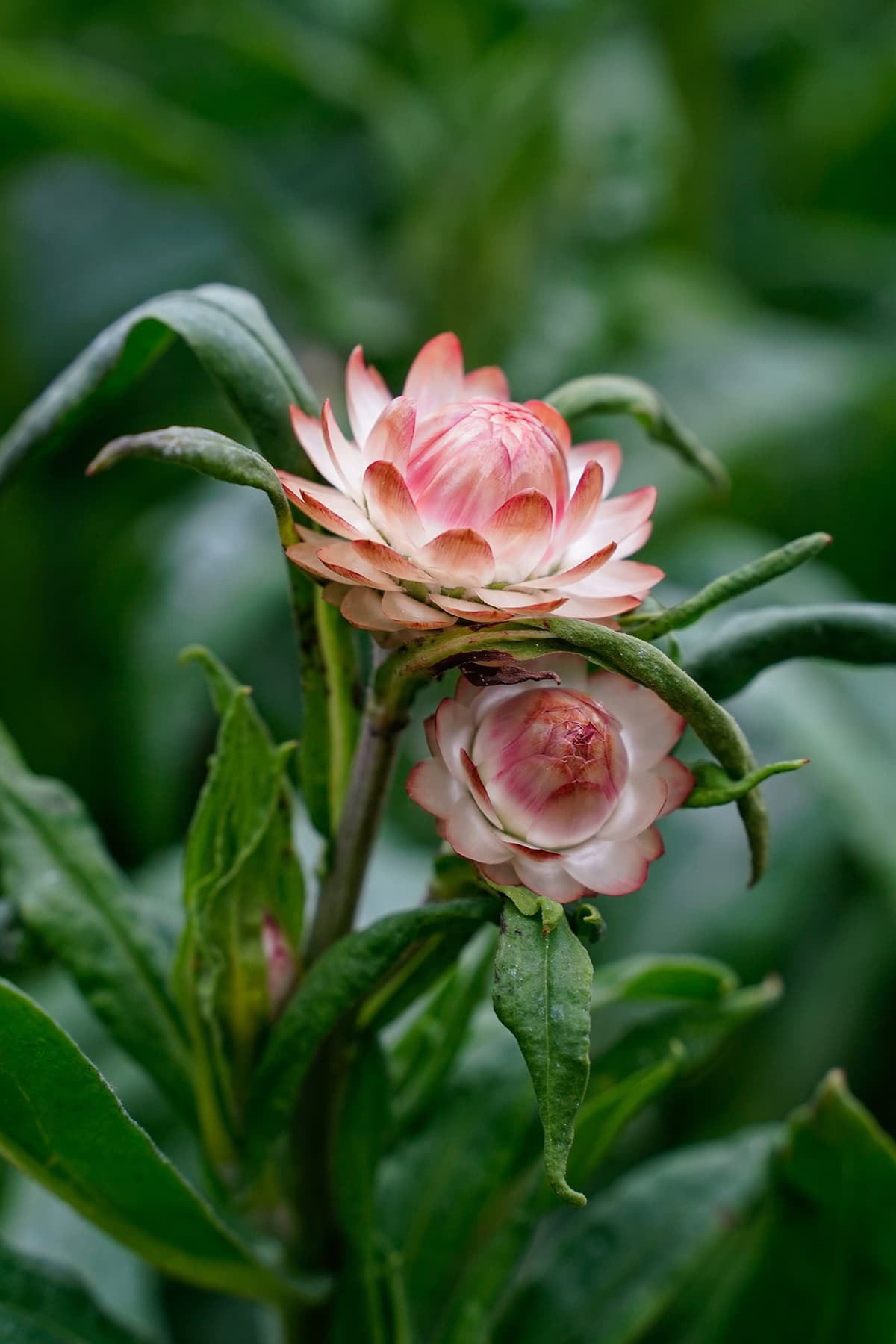
Names you’ll probably run into: ‘Bright Bikini,’ ‘Apricot Pink,’ ‘Silvery Rose,’ and ‘Double Mix.’ Each brings its own vibe and color palette.
It’s worth checking the seed packets or plant tags for details—sometimes there’s a gem hidden in the fine print. With all the options, you’ll find something that fits your garden and your taste, no problem.
